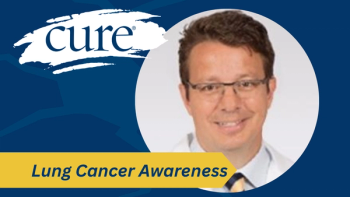
Understanding Radiation Therapy as a Patient with Breast Cancer
Being informed and educated may help patients with breast cancer make a treatment decision and feel less afraid.
There are many treatment options for patients with breast cancer, and it is important stay informed to understand all of the options and their benefits and side effects, according to an expert.
Dr. Ana Botero, a radiation oncologist at the Miami Cancer Institute at Baptist Hospital, presented on radiation therapy for early-stage breast cancer at CURE®’s Educated Patient® Breast Cancer Summit and emphasizes the importance of staying informed and educated on treatment options.
In an interview with CURE®, she explained that radiation therapy is done using a large machine that emits energy, or what Botero called protons and photons, to locally prevent the tumor from coming back. This may also extend survival for patients.
“It’s not only decreasing (the) potential for a local recurrence by maybe 60%, but (it) translates into survival regardless if it’s an early stage or if it’s advanced stage,” she said.
Botero compared administering radiation therapy to patients with prescribing antibiotics. Prior to treatment, there will be scans and appointments to understand which organs need to be protected from further cancer spread. This also helps the radiologist to target those at-risk spots, she explained.
She added that the process of receiving radiation treatment is very fast, takes about 10 to 15 minutes, whereas the treatment itself takes three or four minutes.
Who Undergoes Radiation Therapy?
More than 95% of patients who had a lumpectomy will undergo radiation therapy as part of their treatment, Botero said, as well as patients who has three or more positive lymph nodes and positive surgical margins. Only a few patients would not be recommended for radiation therapy, including older patients aged 70 to 75 years, , those with small tumors or patients without very aggressive disease.
However, she said, “That is just a rule of thumb.” Deciding if a patient is eligible for radiation therapy is not as “black and white.” For patients who might not meet the recommended criteria for radiation, it may still provide a benefit, although at an estimated 10% to 15%, Botero said.
“It will be an open discussion (of) benefits versus side effects with the patient, especially in young females that have another 30 years to live,” she added. “Many patients opt to have the radiation therapy again because the radiation technology has made a big difference on these patients having basically minimal or no side effects, so that 10% to 15% is in their benefit.”
Side effects of radiation therapy include fatigue and redness of the skin, which may be alleviated with creams and other skincare products, Botero said. She added that there is also a risk of
The Importance of Staying Informed
Botero said patients don’t decide upon a treatment on their own; they often go to their physician, listen to their recommendations and base their decision on that information. Although this is a good process, Botero explained that it is important for patients to stay informed and educated about all treatment options. She said if a patient is more informed on treatment options, they can ask more adequate and proper questions to help make a more informed decision.
“I think that knowledge basically enables (a patient) not only to choose (a treatment) but also not to be afraid of the treatment and the potential side effects,” she said. “I think that is very important for the patient as well as for the physician (because) if the patient has a certain level of knowledge, then (a physician) can discuss a little bit more (of the) details that are important for treatment.”
For more news on cancer updates, research and education, don’t forget to





